First chakra or Muladhara: the space of consciousness

The First Chakra is designated by the name of Muladhara (from the Sanskrit mule “root” and adhara “support”). It is also known as radical chakra, root chakra, basal chakra or coxal center.
Located at the base of the spine, in the perineum (between the genitals and the anus), Muladhara is identified as the space of creation or consciousness of being, in addition to the abode of the Kundalini snake (creation energy) and of the collective subconscious.
Receive all our tips by email!
Love Astrology? Subscribe Now and Receive Exclusive Content!
Muladhara represents willpower, survival, material needs, security, perseverance, attachment to life, bonding with the Earth and the physical world. It is the center of self-esteem.
In the physical body, Muladhara governs the adrenal glands, anus, rectum, bones, teeth, large intestine, spine, blood, cells and the prostate in man.
Muladhara: what to know
When the coxal center operates in a balanced way, the subject is self-confident, stable, in balance with the material world and Nature. Sure of the abundant and prosperous provision of the world, which he considers a safe place.
The malfunction of Muladhara makes the individual possessive, insecure, lover of excess, stingy, selfish, stubborn, angry, taxing, violent, distressed. Victim of stress. Apprehensive. Rootless. Apathetic. With fear of abandonment. Life seems an unfair burden.
Other symptoms include shyness, guilt, poor concentration and eagerness to please. On the physical level, the blockade of Muladhara frequently generates disorders associated with eating such as obesity, anorexia and constipation, among others.
Reactivating the Muladhara
To achieve the purification and activation of Muladhara, in addition to resorting to alternative spiritual healing therapies, such as Reiki, a series of simple individual exercises can be performed.
For example, make meditations with the color red (it can be an object of the mentioned color, the lotus with 4 petals that represents this center of power or a sunset); sit on the ground taking advantage of any natural environment; repeat the LAM mantra, associated with Muladhara.
Aromatherapy can also be used and inhale the aroma of essential oils linked to Muladhara (pine, patchouli, cedar, lavender), in a guided session or prepared at home.
Carry stones and crystals with you that favor the energy of Muladhara (agate, garnet, hematite, coral, blood jasper, ruby), develop self-confidence, and practice activities such as Kundalini Yoga, dance, hiking, aerobic and anaerobic exercises.
How to unlock the energy of Muladhara
An under active Muladhara can be activated in different ways.
Earth
We are children of the Earth: reconnect with it while walking barefoot outside on earth and grass. Your energy roots reactivate your Muladhara, to be done regularly, especially if it is very weak at the beginning.
Meditation and visualization
Sit on a chair with your feet flat, or on a cushion on the floor. Make sure you have your back straight, the vertebrae well stacked on top of each other. Begin to focus on your breathing, listening to the air that comes into your lungs, inflates your chest and gets out.
Then focus on your Muladhara, at the base of your vertebral column. Visualize a red sparkle that grows at that spot. It becomes a beautiful bright red ball and bright. Continue to visualize and be aware of your breathing.
The Chakras Explained
Get to know everything about all the 7 chakras bellow.

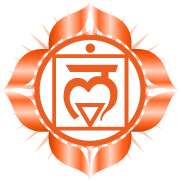
Muladhara
The First Chakra, which is the first of the seven main chakras, is designated by the name of Muladhara (from the Sanskrit mule “root” and adhara “support”). It is also known as radical chakra, root chakra, basal chakra or coxal center.
Read more
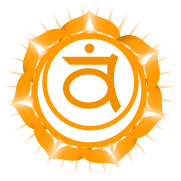
Swadhisthana
The Second Chakra of the seven main chakras is designated by the name of Swadhisthana (from the Sanskrit swa, “the proper” and adhisthana “abode”). It is also known as the sacred chakra or sacred center.
Read more
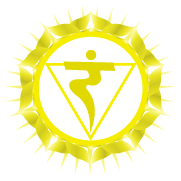
Manipura
An interiorized symbol of solar energy, the third chakra or Manipura is the seat of the Ego and our self. Through it we can affirm our individuality and exercise our free will to build our own life.
Read more

Anahata
The Fourth Chakra of the seven main chakras, is designated by the name of Anahata, which in Sanskrit refers to something that has not been touched, the sound produced by two elements that meet but do not collide. It is also known as heart chakra, cordial center, and unconditional love chakra.
Read more
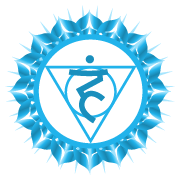
Vishuddha
The fifth chakra is also called throat chakra, or laryngeal chakra. Its Sanskrit name is Vishuddha, meaning “pure”. The problem of the 5th chakra is bound to express its truth in a fair way. This requires that chakras 1 to 4 be well balanced. Located in the throat, between the laryngeal (or nut) prominence and the larynx, Vishuddha represents the link between thoughts and emotions, the way of expressing and communicating.
Read more
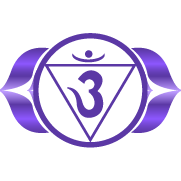
Ajna
The 6th chakra, Ajna, is also called the frontal chakra or 3rd eye. It is the chakra of the inner vision and the extrasensory perception. The 3rd eye allows psychics and therapists to see the aura, to go back into past lives, etc.
Read more
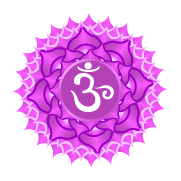
Sanskrit
The seventh chakra is also called Sahasrara, which in Sanskrit language means “multiplied by a thousand”, a clear reference to the lotus of a thousand petals symbol of Illumination. It is the chakra of knowledge, consciousness, intelligence and humility.
Read moreYou may also like:
- Aura cleansing ritual: why you should do it
- Healing gemstones: the most popular
- Forest bathing: why you should try it

